
Storks are a unique wonder of the animal kingdom, from their appearance to their frequent presence in folklore. Storks are the only members of the family Ciconiidae, which also used to include the heron family and ibises family, among many others. They were, however, moved to other families in the classification of species. Now the storks, including the many species under it, stand on their own.
Speaking of families and folklore, storks get their fame from the age-old story told to all children that storks deliver babies, which was the premise for the 2016 animated film ‘Storks’. But beyond their baby-making skills, storks are truly a magnificent family of species with some very interesting characteristics. This family of birds has 6 genera under it, with over 15 different species. We've picked our ten favorites. Just take a look at these beauties
I. Anastomus (Openbills)
There are 2 Openbill species of storks that can be found.
1. Asian Openbill (Anastomus oscitans)
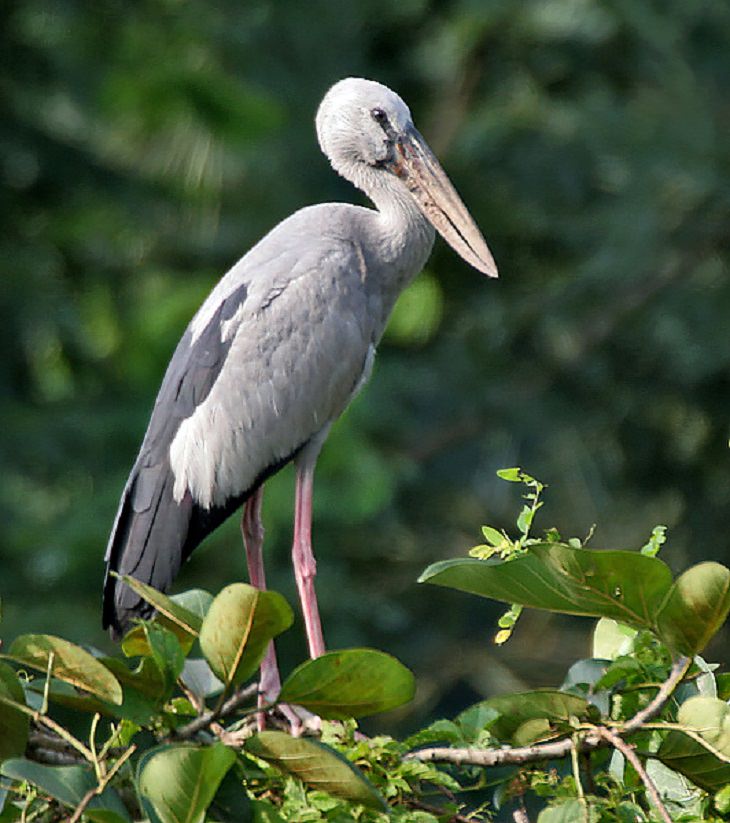
(By J.M.Garg, Wikimedia Commons)
This lovely bird is found predominantly in India, Sri Lanka and Southeast Asia. During breeding seasons, Asian Openbills are mostly white in color, while in non-breeding seasons, their plumage takes on a greyish hue. So you can always tell when its Openbill mating season in Asia!
2. African Openbill (Anastomus lamelligerus)
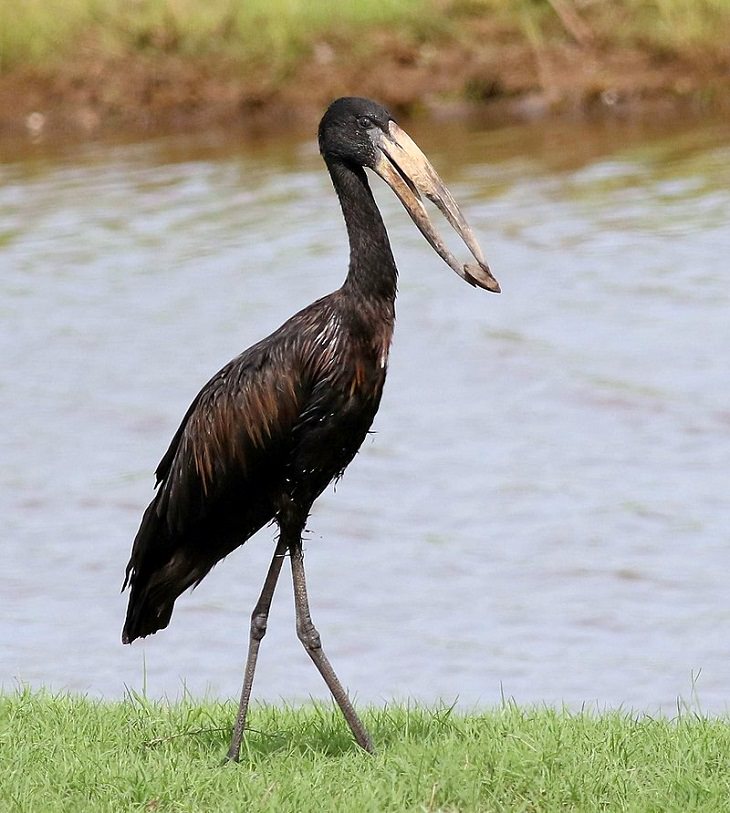
(By Derek Keats, Wikimedia Commons)
Unlike its Asian counterpart, this bird maintains a largely dark brown and blackish hue. However, their similarities, of course, reside in the noticeable gap seen toward the end of their bills. These birds are found through Sub-Saharan Africa to South Africa.
II. Ciconia
This genus derives its name from the Latin word for ‘Stork’, and has 7 species under it.
3. Abdim’s Stork (Ciconia abdimii)
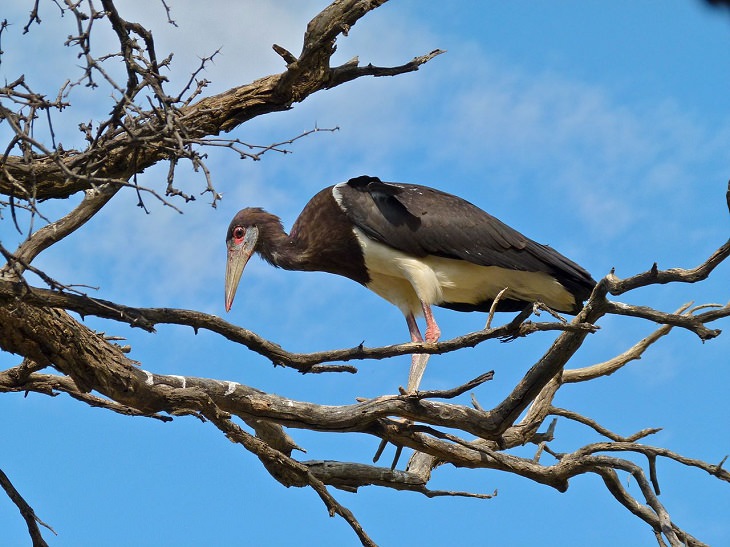
(By Bernard DUPONT, Wikimedia Commons)
Found in Eastern Africa, and moving into South Africa from Ethiopia, Abdim's Stork is also known as the white-bellied stork, due to its strikingly white abdomen against its otherwise black plumage. It is the smallest species of stork, and thanks to its small stature, it is considered a good omen by the local African natives, and protected, believed to be a bringer of rain.
4. Asian woolly-necked stork (Ciconia episcopus)
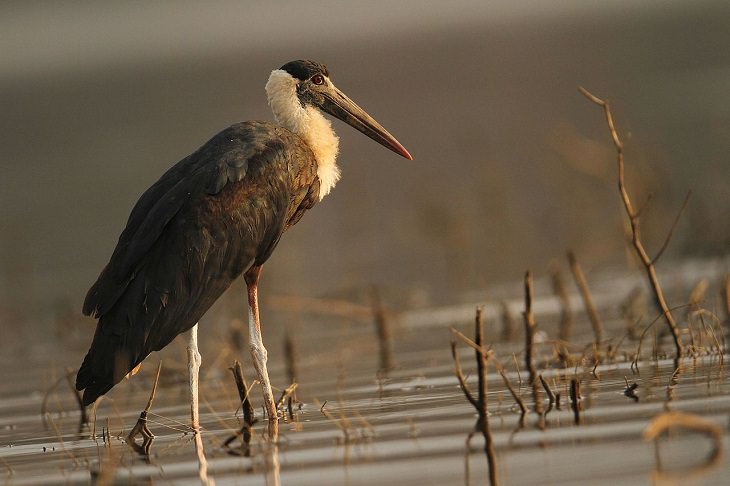
(By Davidvraju, Wikimedia Commons)
This large bird is found in various countries around Asia, as well as tropical Africa, and prefers marshy areas and ponds. First your eye will be drawn to the glorious and fluffy white plumage on its neck. However, if you take a closer look, you’ll notice the feature that truly makes this species unique is the red iris in the eye.
5. Storm’s Stork (Ciconia stormi)
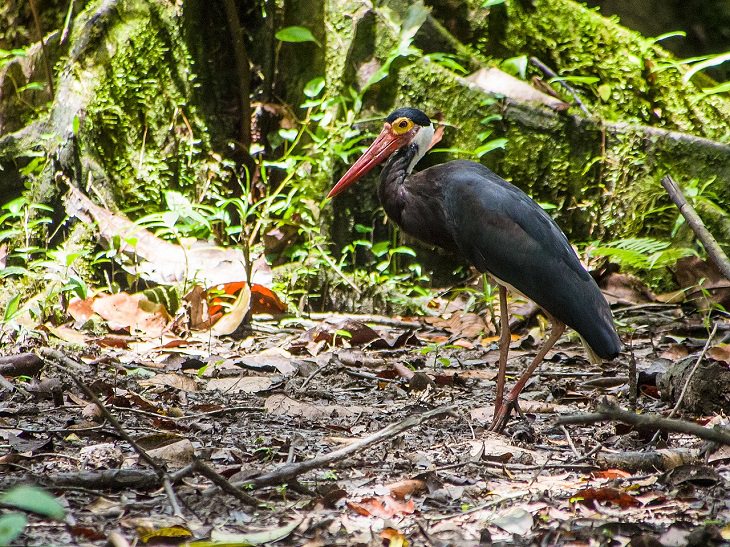
(By Mike Prince, Wikimedia Commons)
Storm’s Stork is found in Malaysia, Indonesia and southern Thailand. This fancy looking bird is well known for its fishing technique. The bird stalks along the river bank, carefully hunting its prey. This technique is known as “nok kra su um”, by locals. The species was named after a zoological collector in the West Indies, named Hugo Storm.
6. Oriental Stork (Ciconia boyciana)
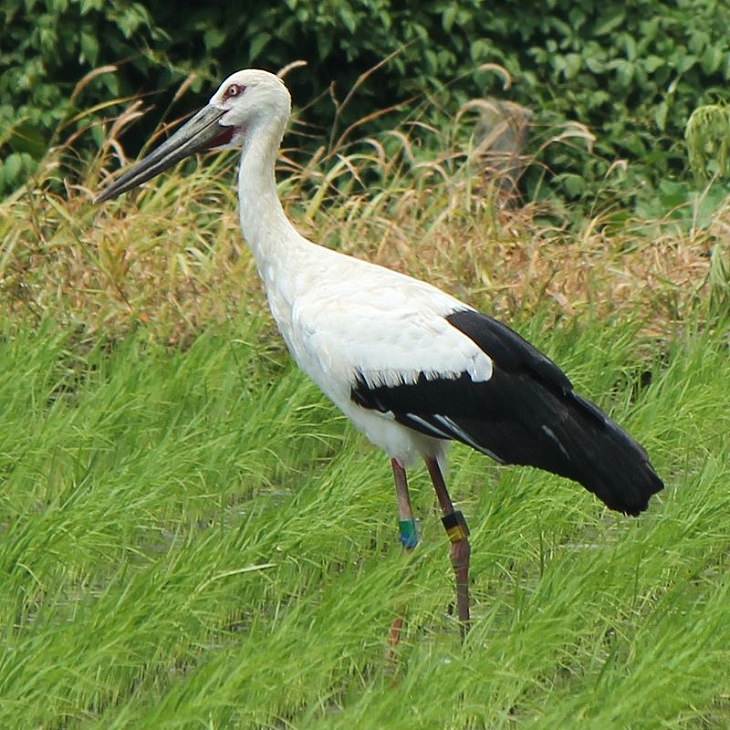
(By Alpsdake, Wikimedia Commons)
Here’s another elegant member of the Stork family. This species is found in China and Russia but, sadly, due to heavy use of pesticides for rice farming, became extinct in Japan and Korea. However, there is still hope, as a hatchling was born in Japan in 2007, to storks bred in captivity. Efforts are being made to release these storks into the wild.
III. Ephippiorhynchus
These species of storks are on the larger side, and the name of the genus is derived from two Ancient Greek words, meaning “saddle” and “bill”.
7. Saddle-billed stork (Ephippiorhynchus senegalensis)
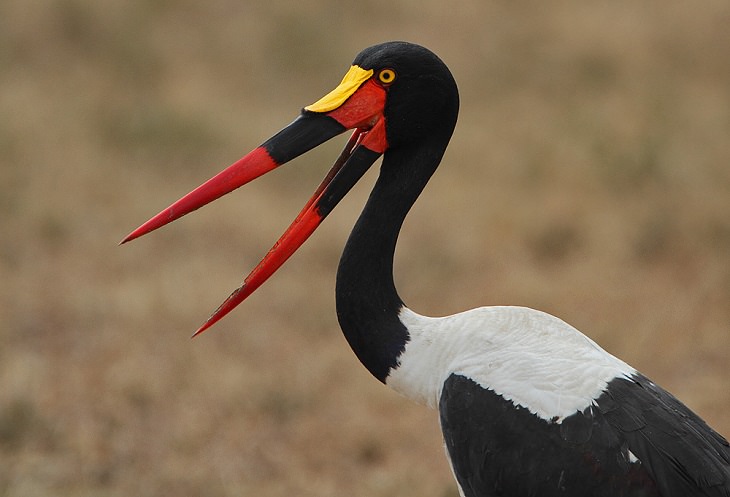
(By Steve Garvie, Wikimedia Commons)
In flight, this bird is massive, with extraordinarily long legs and an equivalent wing span. It also has a beautiful bill, painted red and black. It is also very closely related to the other species under this genus, called the Black-Necked Stork.
IV. Jabiru
This is one genus that is older than time!
8. Jabiru
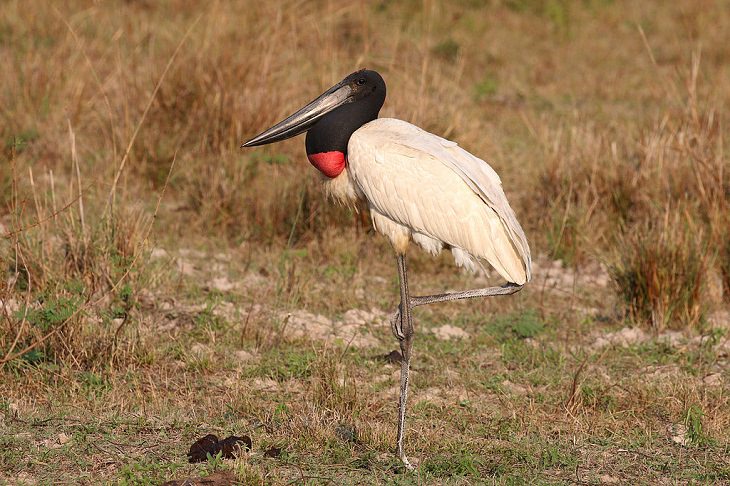
(By Charles J Sharp, Wikimedia Commons)
The Jabiru is a large stork, whose name comes Tupi–Guarani, and in that local language means “swollen neck”. It is found in both North and South America, and the name “jabiru” has been used for other species of stork previous, under the genus Ephippiorhynchus. It is also the tallest bird that flies in South and Central America
V. Leptoptilos
This is the genus of more tropical storks.
9. Greater Adjutant (Leptoptilos dubius)
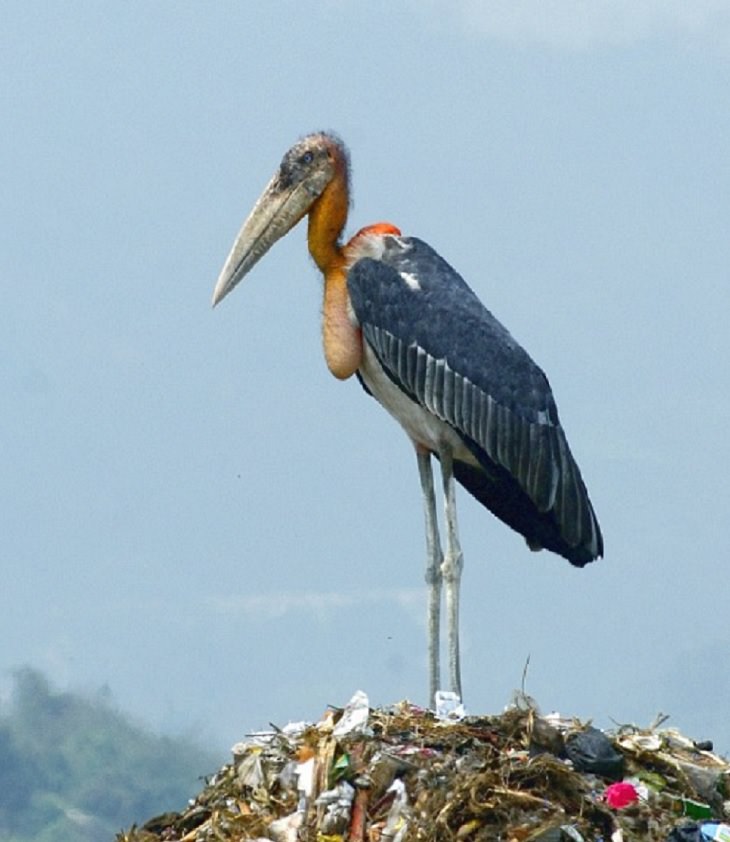
(By Yathin sk, Wikimedia Commons)
My favorite one amongst the three species in this genus, this species resides mostly in India as well as some parts of Borneo. It has an odd but oddly regal and domineering look. They also share a lot of similarities with vultures, and are actually scavenger birds unlike most other storks.
VI. Mycteria
A much older genus of storks, the four species under this genus are believed to be related to the prehistoric wood stork.
10. Painted Stork (Mycteria leucocephala)
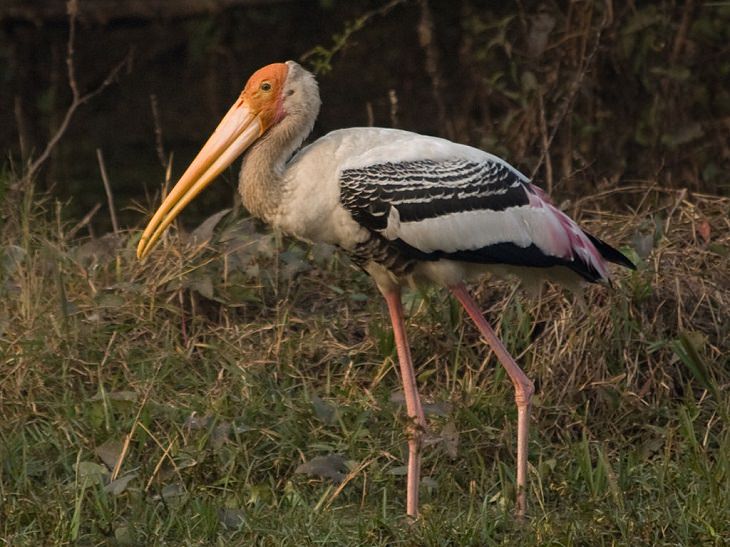
(By Sachin Nigam, Wikimedia Commons)
This lovely lady (or lad) is another one of my favorites because of its beautiful white plumage tinged with pink, making it especially aesthetic. This species can be seen in the wetlands south of the Himalayan range, in case you ever needed another incentive to visit the Himalayas!